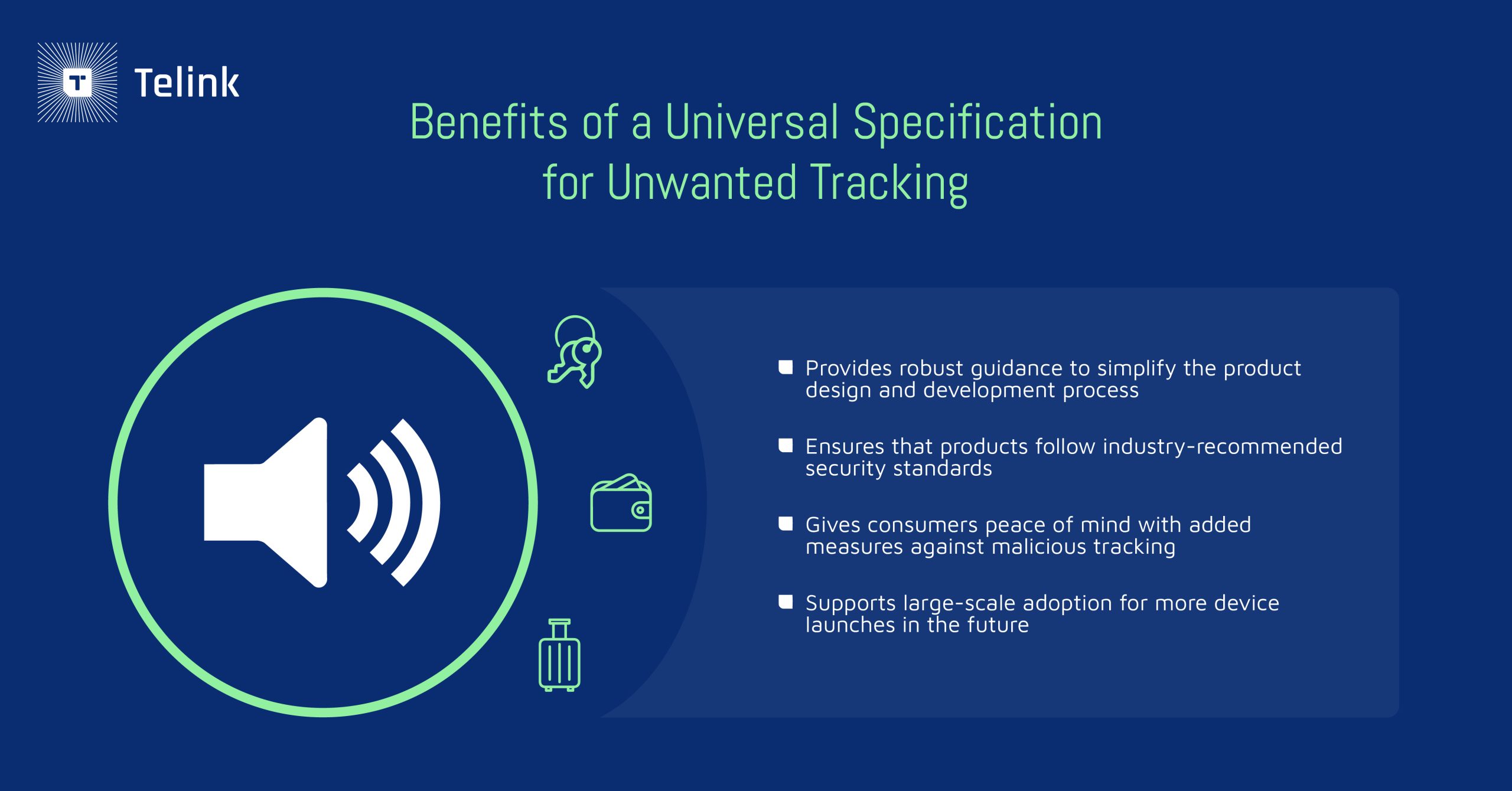



PLEASE ROTATE ME


Telink Staff
June 29, 2023
Standards

Apple and Google are teaming up to create a universal specification that will not only prevent unwanted tracking but strengthen the security of location services on all devices.
In today’s fast-paced world, it’s easy to get lost in our busy schedules and forget where we place essential items like our wallet, keys, and phone. Fortunately, personal item tracking offers a convenient and accessible way to find valuable items quickly and easily. By leveraging a network of mobile devices, applications like Apple’s Find My network or Google’s Find My Device platform can report the location of any tracked item, even if it’s left at a remote place.
However, with this perk comes the possibility of undetected or malicious tracking. Although tech giants like Apple and Google already have corresponding measures in place to curb unwanted tracking, an industry-wide specification is in the works to provide baseline guidance for device developers. Here’s what this means for the tech industry moving forward.
Personal item tracking generally leverages Bluetooth® crowd-sourcing to help users find valuable belongings that have been accidentally left behind. Bluetooth crowd-sourcing relies on Bluetooth wireless technology already present in smartphones and other electronic devices to detect the user’s device with tracking capability. Information received from the device via Bluetooth is relayed to applications like Apple’s Find My network and Google’s Find My Device platform for long-distance remote monitoring.
Apple’s Find My network harnesses a crowd-sourced hub of Apple devices that use Bluetooth wireless technology to detect missing devices or items nearby and report their approximate location back to the owner. Google’s Find My Device operates similarly, collecting location data from devices to help users find their lost Android devices. Both services are anonymous and encrypted, keeping your personal data confidential and safeguarding access to your device.
Personal item tracking powered by Bluetooth crowd-sourcing ensures users can find valuable items that have been lost or stolen, which can be a lifesaver in stressful situations and provide peace of mind.
Yet there is a potential misuse of personal item tracking that one should be aware of — unwanted tracking. Unwanted tracking involves the illegal use of tracking devices to monitor the activities of others. Individual device network platforms have recognized this issue and introduced unknown tracker alerts that will notify victims when a tracking device is unexpectedly with them. However, a broader, industry-wide specification is necessary to provide baseline guidance for device developers to help curb this behavior.
To address such concerns surrounding personal item tracking, Apple and Google have initiated a collaborative effort with other industry leaders to develop a universal specification. The specification aims to provide guidelines surrounding location tracking devices by focusing on unwanted tracking detection.
While not set in stone, the proposed specification includes several important suggestions, including:
The specification is currently in its Internet-Draft phase, and interested stakeholders are welcome to read it and provide input until early November 2023. After that, Apple and Google will review all feedback and fine-tune the proposal so that the specification can eventually be implemented worldwide, which may pave the way for stronger growth of personal item tracking devices in the near future.

At Telink, we provide a solution to support the development of personal item tracking devices based on Apple Find My network and other major device network platforms. Although Apple and Google’s specification for detecting unwanted tracking is still in progress, Telink is ready to align with the final guidelines to help preserve safety and confidence among tech consumers around the world. In the meantime, Telink is committed to developing SoC solutions that meet the ever-evolving security standards of today, tomorrow, and the years to come.
Please visit our wiki to learn more about our products and solutions, or ask us a question through our Technical Forum or by contacting us directly today.